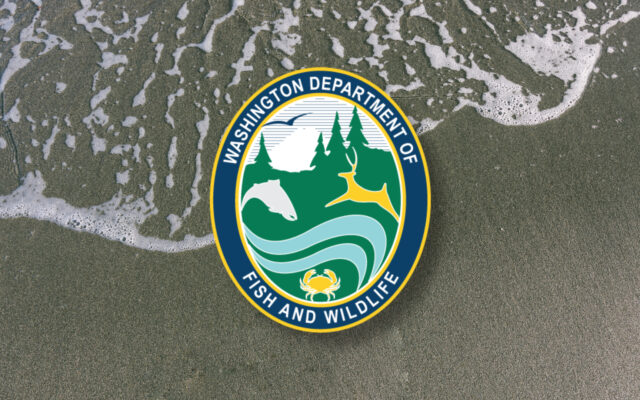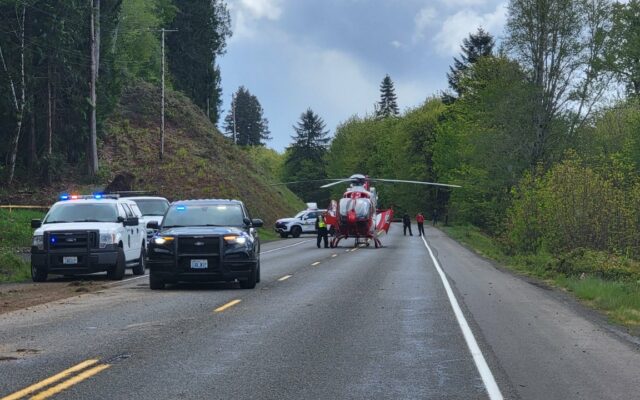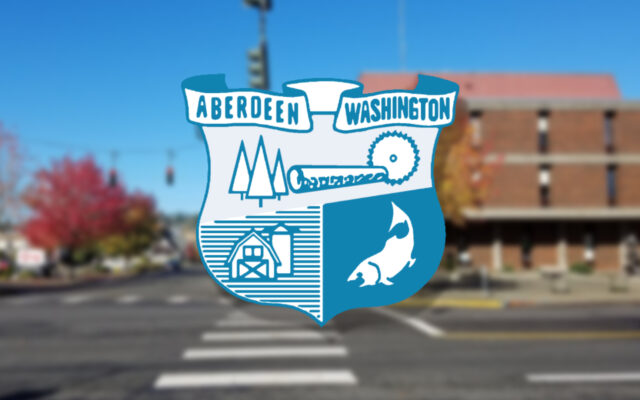Four days of razor clam digging start Friday; Mocrocks opening postponed

Washington Department of Fish and Wildlife (WDFW) shellfish managers confirmed that the first round of razor clam digging can begin this Friday, although not all beaches tentatively scheduled will open.
“The first razor clam digs of the season will begin on some beaches this Friday (Sept. 29), but unfortunately we’ll have to wait a little longer to harvest at Mocrocks,” said Bryce Blumenthal, a WDFW coastal shellfish biologist. “Domoic acid toxicity levels remain elevated on the other beaches that will open, and ocean conditions can change quickly. For that reason, diggers should continually check our website before digging to confirm that beaches remain open as we continue to closely test and monitor the situation.”
Domoic acid levels at Mocrocks have exceeded the health guidelines set by the Washington Department of Health (WDOH) officials for safe consumption, so that beach remains closed to clamming at this time.
The state website that tracks domoic acid levels shows that in three tests on September 24, Mocrocks saw one test result well below the health levels, while one sample reached the 20 ppm level and another topped it slightly at 21 ppm.
Domoic acid, a natural toxin produced by certain types of marine algae, can be harmful or fatal if consumed in sufficient quantities. WDFW shellfish staff will continue to regularly dig test samples of razor clams to monitor the situation. WDOH requires two test samples taken seven to 10 days apart, must fall under the health guideline level before a beach can reopen for razor clam digging.
The following digs during evening (p.m.) low tides will proceed as scheduled, after marine toxin results from the WDOH showed razor clams are safe to eat:
- Sept. 29, Friday; 7:18 p.m.; -0.4 feet; Long Beach, Twin Harbors
- Sept. 30, Saturday; 8:04 p.m.; -0.9 feet; Long Beach, Twin Harbors, Copalis
- Oct. 1, Sunday, 8:49 p.m.; -1.0 feet; Long Beach, Twin Harbors
- Oct. 2, Monday, 9:36 p.m.; -0.9 feet; Long Beach, Twin Harbors, Copalis
Final approval of marine toxin testing usually occurs about a week or less – sometimes two to three days – prior to the start of each digging series. Below are additional tentative dates:
- Oct. 14, Saturday, 7:17 p.m.; 0.2 feet; Long Beach, Twin Harbors, Mocrocks
- Oct. 15, Sunday,7:52 p.m.; -0.1 feet; Long Beach, Twin Harbors, Copalis
- Oct. 16, Monday, 8:28 p.m.; -0.3 feet; Long Beach, Twin Harbors, Mocrocks
- Oct. 17, Tuesday, 9:06 p.m.; -0.4 feet; Long Beach, Twin Harbors, Copalis
- Oct. 18, Wednesday, 9:49 p.m.; -0.3 feet; Mocrocks
- Oct. 27, Friday, 6:18 p.m.; -0.4 feet; Long Beach, Twin Harbors, Mocrocks
- Oct. 28, Saturday, 7:03 p.m.; -1.0 feet; Long Beach, Twin Harbors, Copalis
- Oct. 29, Sunday, 7:46 p.m.; -1.3 feet; Long Beach, Twin Harbors, Mocrocks
- Oct. 30, Monday, 8:29 p.m.; -1.3 feet; Long Beach, Twin Harbors, Copalis
- Oct. 31, Tuesday, 9:12 p.m.; -1.0 feet; Mocrocks
- Nov. 12, Sunday, 5:53 p.m.; -0.3 feet; Mocrocks
- Nov. 13, Monday, 6:30 p.m.; -0.7 feet; Long Beach, Twin Harbors, Copalis
- Nov. 14, Tuesday, 7:09 p.m.; -0.9 feet; Long Beach, Twin Harbors, Mocrocks
- Nov. 15, Wednesday, 7:51 p.m.; -0.9 feet; Long Beach, Twin Harbors, Copalis
- Nov. 16, Thursday, 8:37 p.m.; -0.8 feet; Long Beach, Twin Harbors, Mocrocks
- Nov. 17, Friday, 9:27 p.m.; -0.5 feet; Copalis
- Nov. 18, Saturday, 10:22 p.m.; -0.1 feet; Mocrocks
- Nov. 24, Friday, 4:18 p.m.; 0.0 feet; Long Beach, Twin Harbors, Copalis
- Nov. 25, Saturday, 5:05 p.m.; -0.7 feet; Long Beach, Twin Harbors, Mocrocks
- Nov. 26, Sunday, 5:49 p.m.; -1.2 feet; Long Beach, Twin Harbors, Copalis
- Nov. 27, Monday, 6:31 p.m.; -1.3 feet; Long Beach, Twin Harbors, Mocrocks
- Nov. 28, Tuesday, 7:12 p.m.; -1.2 feet; Long Beach, Twin Harbors, Copalis
- Nov. 29, Wednesday, 7:52 p.m.; -0.8 feet; Mocrocks
- Dec. 13, Wednesday, 6:55 p.m.; -1.3 feet; Long Beach, Twin Harbors, Mocrocks
- Dec. 14, Thursday, 7:39 p.m.; -1.3 feet; Long Beach, Twin Harbors, Copalis
- Dec. 15, Friday, 8:25 p.m.; -1.2 feet; Long Beach, Twin Harbors, Mocrocks
- Dec. 16, Saturday, 9:12 p.m.; -0.8 feet; Long Beach, Twin Harbors, Copalis
- Dec. 17, Sunday, 10:01 p.m.; -0.3 feet; Long Beach, Twin Harbors, Mocrocks
- Dec. 26, Tuesday, 6:18 p.m.; -0.9 feet; Long Beach, Twin Harbors, Copalis
- Dec. 27, Wednesday, 6:57 p.m.; -0.8 feet; Long Beach, Twin Harbors, Mocrocks
- Dec. 28, Thursday, 7:35 p.m.; -0.6 feet; Long Beach, Twin Harbors, Copalis
- Dec. 29, Friday, 8:11 p.m.; -0.3 feet; Long Beach, Twin Harbors, Mocrocks
On all open beaches – Long Beach, Twin Harbors, and Copalis – the daily limit is 15 clams per person. Each digger’s clams must be kept in a separate container, and all diggers must keep the first 15 clams they dig, regardless of size or condition.
“It’s important that diggers keep the clams they dig to prevent wastage,” Blumenthal said. “It’s not unusual to encounter some small clams, especially this early in the season.”
Most successful digging occurs between one and two hours before the listed time of low tide.
This time of the year the beaches are still built up with soft and deep sand, so driving can be a challenge especially on and off the beach approaches. There are plenty of places in which diggers can park and walk onto the beach and dig, but keep in mind that parking on the sand and gravel beach approaches is not allowed and causes traffic problems.
All diggers age 15 or older must have an applicable fishing license to harvest razor clams on any beach. Licenses can be purchased from WDFW’s licensing website, and from hundreds of license vendors around the state. WDFW recommends buying your license before visiting coastal beach communities.
The updated 2023-24 Razor Clam Management Plan is available on the WDFW’s website. You can view additional 2023-2024 razor clam information on the WDFW razor clam webpage.



